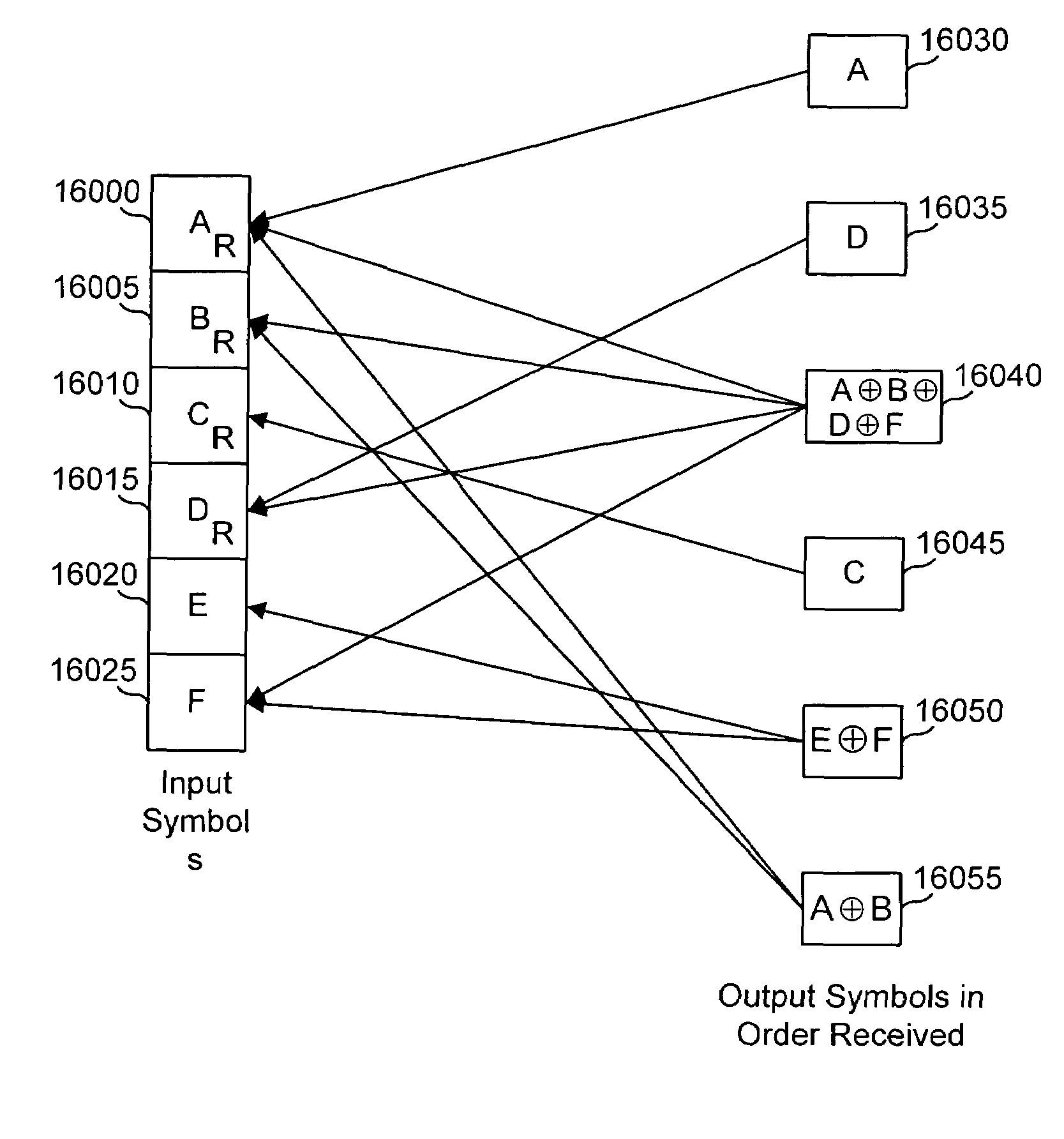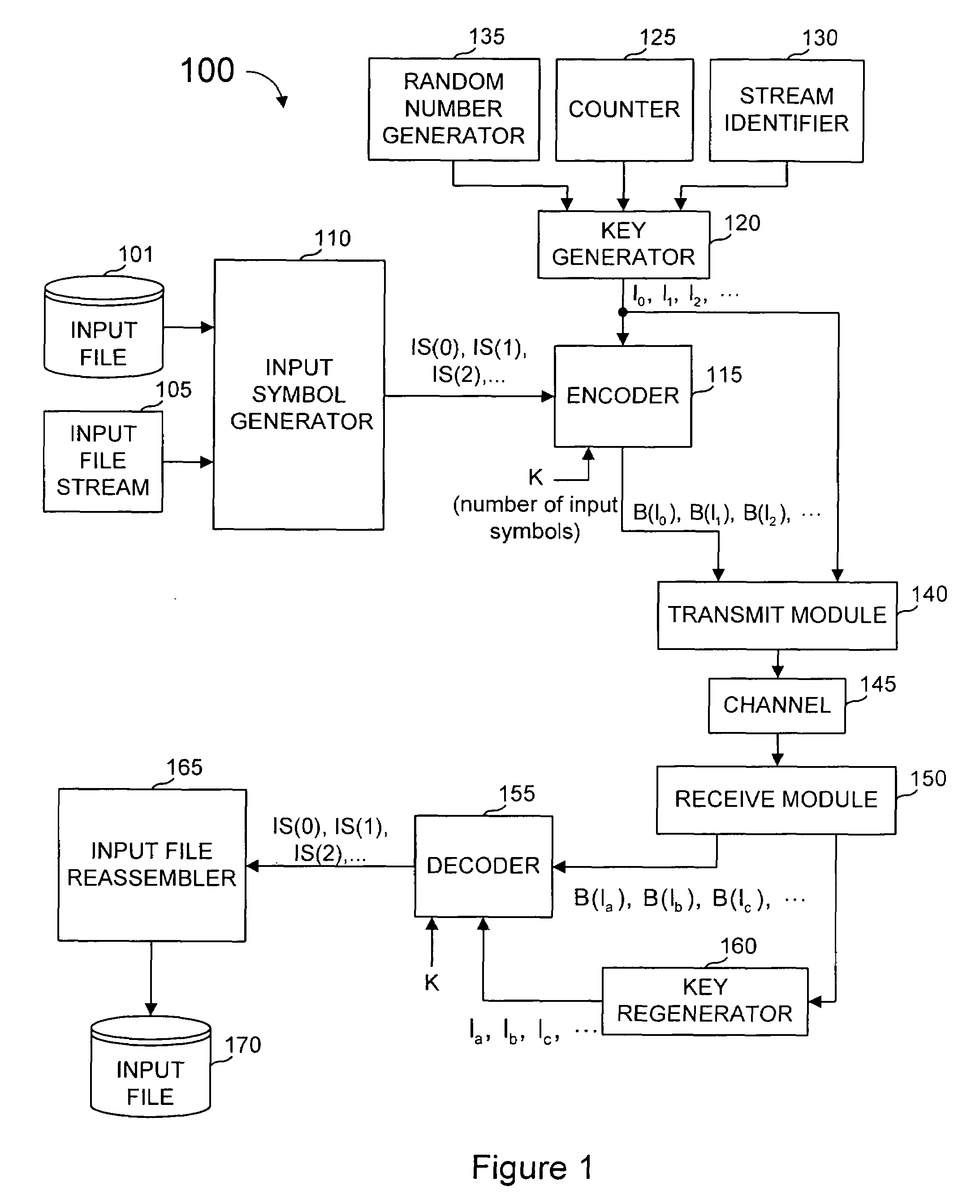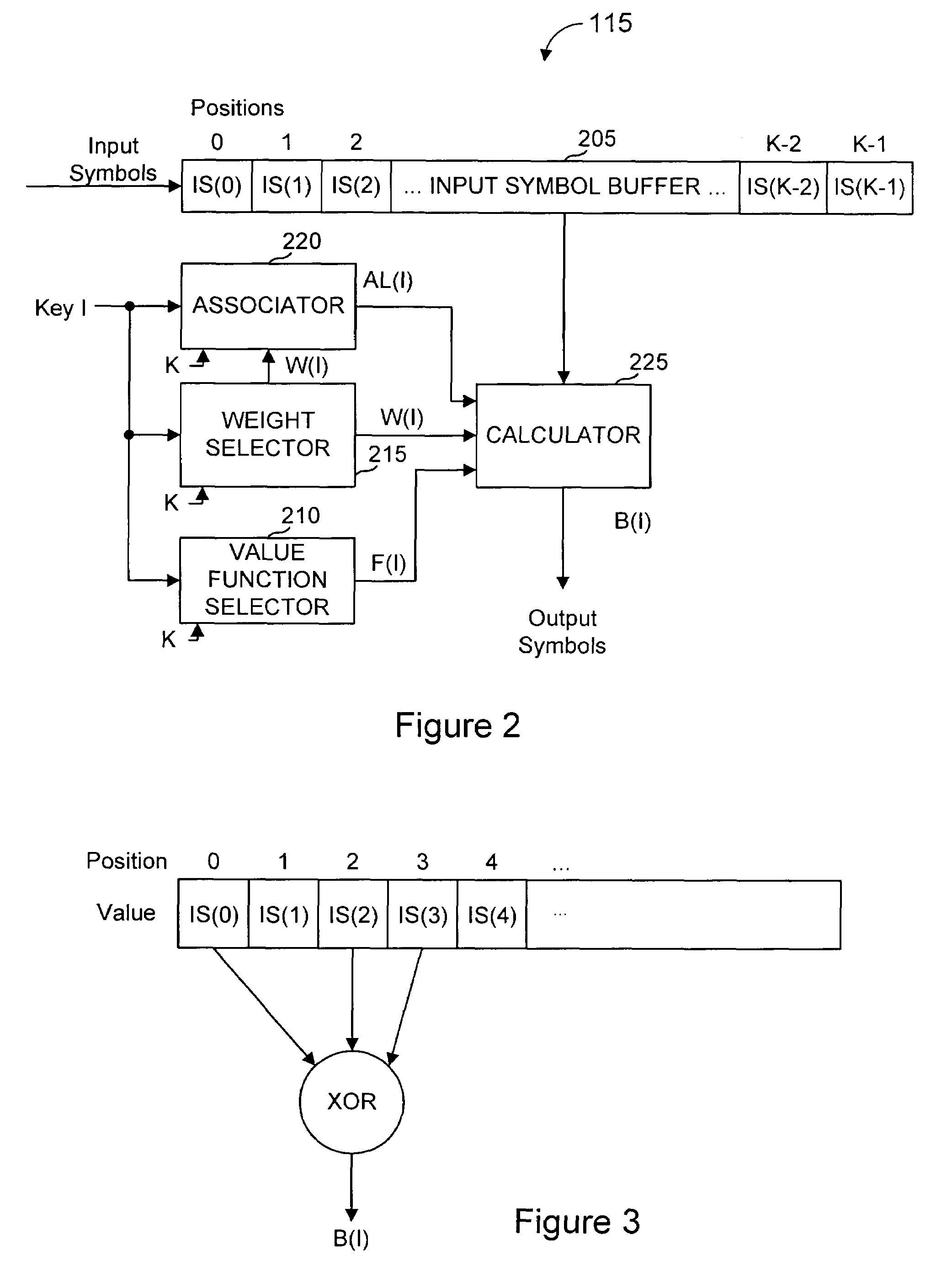Lost data (erasures) are often easier to deal with than garbled data (errors) because the recipient cannot always tell when garbled data is data received in error.
In a typical multiple sender system sending one file to a receiver, if the senders do not coordinate which data they will transmit and when, but instead just send segments of the file, it is likely that a receiver will receive many useless duplicate segments.
If the sender just sends segments of the original file and some segments are lost, it is likely that a receiver will receive many useless duplicate segments before receiving one copy of each segment in the file.
However, TCP is often not suitable for one-to-many or many-to-many communications or where the sender and the recipient independently determine when and where they will transmit or receive data.
On the Internet, packet loss often occurs because sporadic congestion causes the buffering mechanism in a router to reach its capacity, forcing it to drop incoming packets.
Although acknowledgment-based protocols are generally suitable for many applications and are in fact widely used over the current Internet, they are inefficient, and sometimes completely infeasible, for certain applications.
In particular, acknowledgment-based protocols perform poorly in networks with high latencies, high packet loss rates, uncoordinated recipient joins and leaves, and / or highly asymmetric bandwidth.
High latency is where acknowledgments take a long time to travel from the recipient back to the sender.
High latency may result in the overall time before a retransmission being prohibitively long.
High packet loss rates also cause problems where several retransmissions of the same packet may fail to arrive, leading to a long delay to obtain the last one or last few unlucky packets.
In the typical system, if a recipient joins and leaves an ongoing transmission without coordination of the senders, the recipient will likely perceive a loss of large numbers of packets, with widely disparate loss patterns perceived by different recipients.
Asymmetric bandwidth may make it prohibitively slow and / or expensive for the recipient to acknowledge packets frequently and infrequent acknowledgments may again introduce delays.
Furthermore, acknowledgment-based protocols do not scale well to broadcasting, where one sender is sending a file simultaneously to multiple users.
Protocols that rely on acknowledgment data (either positive or negative) for reliable delivery of the file require a back channel from each recipient to the sender, and this can be prohibitively expensive to provide.
Furthermore, this requires a complex and powerful sender to be able to properly handle all of the acknowledgment data sent from the recipients.
Another drawback is that if different recipients lose different sets of packets, rebroadcast of packets missed only by a few of the recipients causes reception of useless duplicate packets by other recipients.
However none has been clearly adopted at this time, for various reasons.
For one, acknowledgment-based protocols also do not scale well where one recipient is obtaining information from multiple senders, such as in a low earth orbit (“LEO”) satellite broadcast network.
A major drawback with a carousel-based protocol is that if a recipient misses even one packet, then the recipient has to wait another entire cycle before having a chance at receiving the missed packet.
Another way to view this is that a carousel-based protocol can cause a large amount of useless duplicate data reception.
For example, if a recipient receives packets from the beginning of the carousel, stops reception for a while, and then starts receiving again at the beginning of the carousel, a large number of useless duplicate packets are received.
However, many erasure code solutions either fail to solve the problems of acknowledgment-based protocol or raise new problems.
One problem with many erasure codes is that they require excessive computing power or memory to operate.
This leads to inefficiencies if the loss rate of packets is overestimated, and can lead to failure if the loss rate of packets is underestimated.
This limitation is generally acceptable for many communications problems, so long as N is selected to be greater than K+A by at least the actual packet loss, but this requires an advance guess at the packet loss.
Another disadvantage of Tornado codes is that they require the encoder and decoder to agree in some manner on a graph structure.
Furthermore, the graphs needed by the Tornado codes are complicated to construct, and require different custom settings of parameters for different sized files to obtain the best performance.
These graphs are of significant size and require a significant amount of memory for their storage at both the sender and the recipient.
Thus, it is very likely that a recipient obtaining output symbols generated from the same input file using the same graph from more than one sender will receive a large number of useless duplicate output symbols.
 Login to View More
Login to View More  Login to View More
Login to View More 


